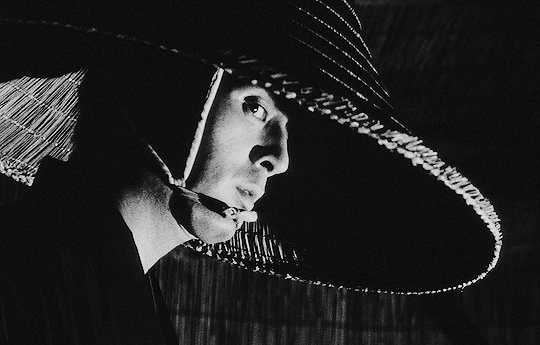
Toshiro Mifune is looking rather fly in his Christmas sweater.

https://memora8ilia.com/index.php/2022/12/25/toshiro-mifune-is-looking-rather-fly-in-his/

Toshiro Mifune is looking rather fly in his Christmas sweater.

https://memora8ilia.com/index.php/2022/12/25/toshiro-mifune-is-looking-rather-fly-in-his/

❝ The 1950s are widely regarded as a golden age of Japanese Cinema. To enormously simplify a complex period in history, a lot changed between the end of WWII in 1945 and the end of the Allied Occupation of Japan in 1952. Censorship was simultaneously lifted and imposed. The Occupation restrained Japan in terms of what it could say in films being produced (for example, anything that “promoted feudal values” was not allowed), yet at the same time, exposed it to all kinds of western material that had been forbidden in the pre-war years. When the Americans left, the restrictions were lifted but the new influences survived, unleashing a tsunami of innovative, passionate cinema, much of which is still widely regarded as some of the best of all time. ❞ *

❝ There are a slew of canonical classics from Seven Samurai and Throne Of Blood to Life Of Oharu or Tokyo Story, but one of the major releases of the era that’s frequently overlooked (even though it won the Academy Award for Best Foreign Language Film in 1955) is Hiroshi Inagaki’s Samurai Trilogy. It was released across three films over as many years but is best enjoyed as a single piece of work; a five-hour biography of legendary swordsman Musashi Miyamoto. ❞ *


❝ In Samurai I: Musashi Miyamoto (1954) we are introduced to our hero, played by the incomparable Toshiro Mifune (who, the same year, would also play Kikuchiyo in Seven Samurai – quite a hot time for him!). Angry and disenchanted with life in Miyamoto village, Musashi (then known only as Takezo, his childhood name) dreams of being a warrior. As he doesn’t have much in the way of family, he sets off to war with his only friend, Matahachi (Rentaro Mikuni). After a battle leaves them wounded and defeated they find themselves lost in the wilderness and are saved by a female thief and her beautiful daughter Akemi. This is only the start of their problems however, as a whole heap of betrayals, lies and other Shakespearian intrigues unravel… ❞ *

I love this trilogy, though it might be difficult to follow if you’re not already familiar with samurai movie tropes and conventions. And I know Samurai I is just the first part of a trilogy, but, man, THIS is how you end a movie!
https://memora8ilia.com/index.php/2022/07/13/samurai-i-musashi-miyamoto/

Ryunosuke Tsukue reminds me of No Country For Old Men’s Anton Chigurh — an amoral anthrophobe willing to do harm for fun and profit. There’s no rhyme or reason (though The Sword of Doom does hint at daddy issues). Anton’s coin tossing becomes Ryunosuke’s non-lethal-turned-lethal fencing duels, both serving to amuse. Even Ryunosuke’s dead-eyed stare echoes Anton’s — I wouldn’t be surprised if Javier Bardem found inspiration in the great Tatsuya Nakadai’s portrayal of unfeeling psychopathy.
A commenter in a Letterboxd review of The Sword of Doom has the most intriguing take on the Ryunosuke character which could also apply to Anton Chigurh:
❝ From a certain perspective, Ryunosuke might actually be the most moral of all the characters. In that, in being so unfeeling he ends up least hypocritical … The Japanese title actually means Great Bodhisattva Pass and I think it’s significant in bringing up the film’s more religious, spiritual aspects. In a weird way Ryunosuke may be pure evil but he is pure, and thus becomes a karmic retribution machine for the universe. ❞
Tatsuya Nakadai is so good that I haven’t even mentioned that Toshiro Mifune is in this with one of the most bad-ass scenes of his career. And the ending is amazing and batshit crazy, and could reasonably be interpreted as being stuck in a purgatory of one’s own making.





https://memora8ilia.com/index.php/2022/05/21/ryunosuke-tsukue-reminds-me-of-no-country-for-old/